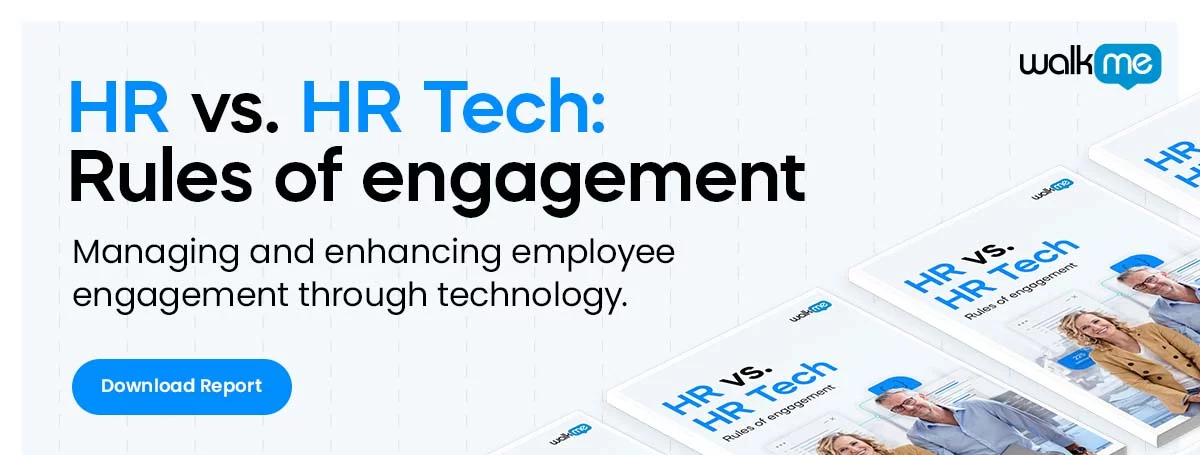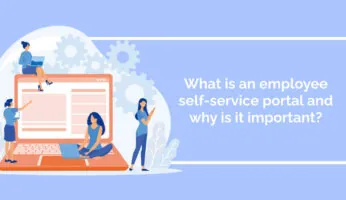
Employee onboarding in the remote era is just as important as it was before 2020, when the WFH trend transformed workplaces around the globe.
How Employee Onboarding Impacts Engagement and Productivity
Onboarding sets the tone for the rest of the employee’s relationship with a company since it forms an employee’s first impression of the company. During onboarding, employees, managers, and teams determine whether new hires are the right fit for the organization.
As a result, the onboarding experience will impact the employee’s dynamics with the company for the remainder of their tenure.
A positive experience will positively impact metrics such as:
- Employee engagement
- Employee productivity
- Employee retention
Likewise, a poor onboarding experience will have a negative impact on those same metrics.
Creating a structured onboarding experience is therefore essential to ensuring employees have a good experience with the company. Given the shift towards a digital, hybrid workplace, however, it is important to rethink the way the onboarding process is conducted.
Creating an Effective Onboarding Process for the Hybrid Workplace
Here are a few points to consider when developing an onboarding experience for the hybrid workforce.
1. Create a structured onboarding process
The larger the business, the more important it is to have a structured process when onboarding new hires. Not only will that consistency improve the new hire experience, it will enable employers to optimize the onboarding process over time.
Using a template or checklist is a good way to structure the experience.
A few elements to focus on when creating a template include:
- Job training
- Social integration
- Orientation, paperwork, and benefits
- Communicating the corporate vision and mission
In short, HR managers can save time, streamline the onboarding process, and create better outcomes for the business.
2. Streamline the digital experience
Creating a consistent digital employee experience is critical for hybrid workers, some of whom may be working in the office and some of whom may be working remotely.
For this reason, it is important to:
- Adopt cloud-based tools
- Train all workers on remote working best practices
- Recruit digitally savvy workers
- Embed continual digital training into the workplace
All of these action items should begin with the earliest stages of the employee life cycle: recruitment and onboarding. This can help ensure that digital remains central to the workplace experience.
3. Standardize business processes
Business process standardization ensures that employees know what to expect and can meet those expectations.
Although it is always beneficial to standardize processes, it is even more useful for remote workers.
In the remote workplace, after all, communication is more difficult.
Employees who are not located in the same office must use digital tools to communicate, rather than relying on social communication, impromptu meetings, and so forth.
Digital tools certainly do offer some benefits when it comes to collaboration. However, social isolation, a common challenge of remote working, can also make collaboration more difficult.
To overcome this challenge, standardize communication and business processes with tools such as business process maps and documentation.
4. Use self-service tools for training
Self-service tools our software applications that allow employees to independently perform tasks that would normally require support from other staff.
The nature of the tools can vary from situation to situation.
Here are a few examples of how self-service tools can be used:
- Automating HR tasks, such as vacation requests
- Providing technical support through chatbots
- Automating work tasks through tools such as digital adoption platforms (DAPs)
In a normal office it is easy to receive help from coworkers, who are often located nearby, if not in the same room. When working remotely, however, it is more difficult to casually call on team members for support.
Self-service solutions mitigate this problem and can begin improving employee productivity from day one.
5. Close the social divide as early as possible
Social isolation and social distance are among the most challenging aspects of remote work.
The same holds true for hybrid work, which is part remote, part onsite.
Not only can social isolation contribute to feelings of loneliness, it can hinder collaboration and productivity. As mentioned, digital tools are one way to overcome this challenge. The right tools can help team members stay organized and focused on the task at hand, while ensuring that all work activities are documented and clear.
However, this does not combat the feelings of loneliness that come with social isolation.
When managing remote workers, it is therefore important to tackle this by closing the social divide as much as possible.
Here are a few ways to do this:
- Hold frequent meetings, to ensure that employees stay in sync
- Hold social gatherings online
- Establish a daily routine, such as daily check-ins
- Meet in person, if and when possible
It is important to point out that too much communication can be construed as micromanagement. Overcompensating can have the opposite effect – namely, too much oversight can make employees feel boxed in and claustrophobic.
It is therefore important to strike a balance between too much communication and too little. Managers should develop empathy and use emotional intelligence to personalize communication styles to meet employees’ needs.
Starting this early during the onboarding process can improve the onboarding experience and help reduce the stress and uncertainty that comes with social isolation and remote working.
WalkMe Team
WalkMe spearheaded the Digital Adoption Platform (DAP) for associations to use the maximum capacity of their advanced resources. Utilizing man-made consciousness, AI, and context-oriented direction, WalkMe adds a powerful UI layer to raise the computerized proficiency, everything being equal.



